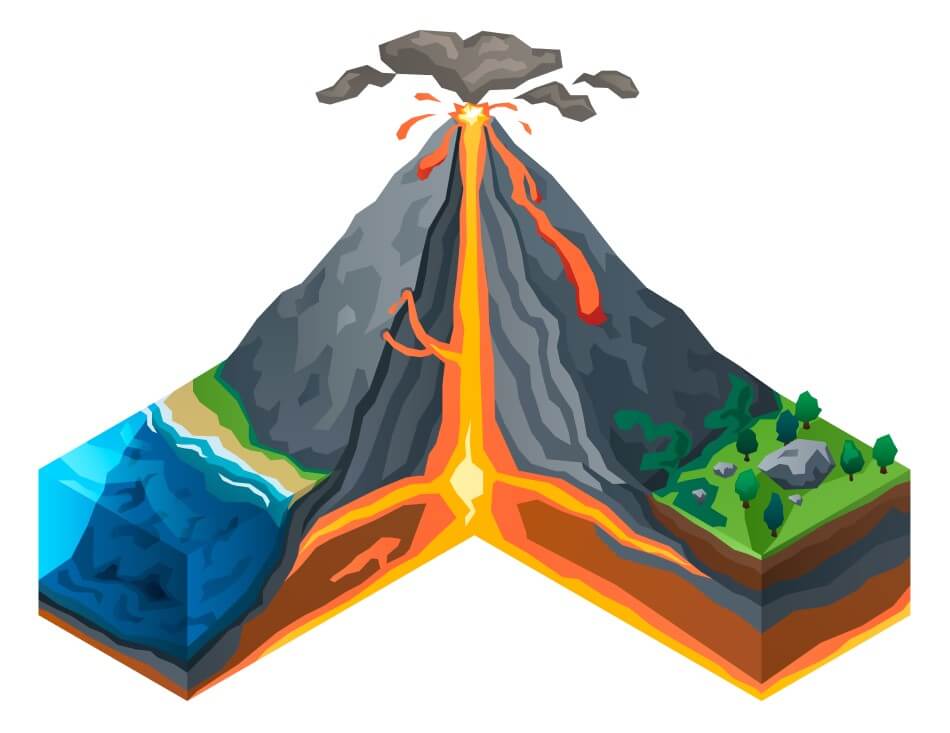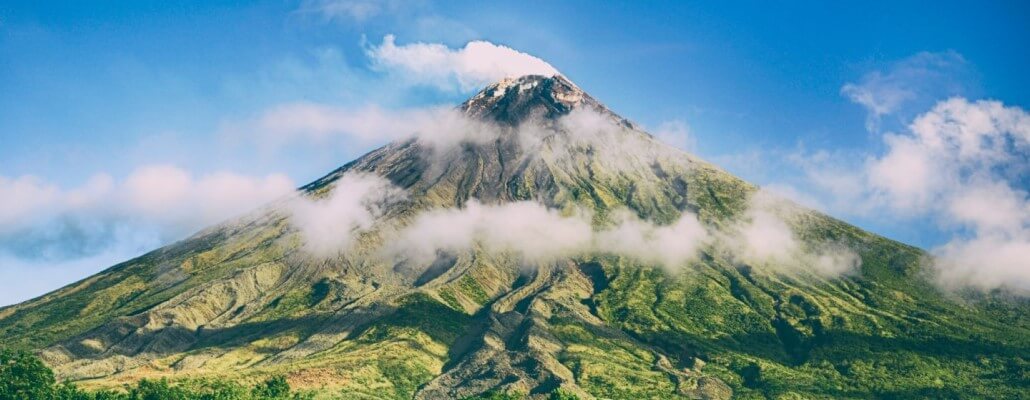Volcanoes are amazing. They can be found all around the world, and even underwater! Over the last 10,000 years there are about 1,500 volcanoes on land that we know have been active, and there are even more beneath our oceans, which are much harder to find and count.
Take a look at these 11 mind-blowing facts about volcanos.
1. The word ‘volcano’ comes from the island ‘Vulcano’, in Italy.
In turn, the island gets it’s name from Vulcan, the Roman God of Fire.
2. Most volcanoes form from the movement of tectonic plates.
These plates form the surface of the planet, but they can (and do) move around. Sometimes when these plates crash into each other, or a spot in the middle of a plate wears a little bit thin, a volcano will form.
3. Underwater volcanoes can create Islands.
For example, did you know that the Hawaiian islands were formed from underwater volcanic eruptions? If you look at them on a map you can see how the islands formed in a chain as a tectonic plate moved the volcano across the surface of the earth.
4. There are 3 different types of volcano.
Shield volcanoes have a thin lava that can flow further, creating wide flat slopes for kilometres from the volcano. Stratovolcanoes are made up of different kinds of lava, and when they erupt they throw ash and rock far into the sky. Finally Cinder cone volcanoes are smaller, usually don’t have very violent eruptions and don’t grow very tall.

5. As you read this, there are likely around 15-20 volcanoes erupting.
We might not spot them all since some are small or occurring underwater, but they are all changing the surface of our world.
6. Volcanoes are VERY dangerous.
The power of a volcanic eruption is hard to imagine!. When mount St. Helens erupted in 1980, over the whole event the amount of energy released was about the same as 1,600 atomic bombs.
7. There are super volcanoes.
That’s right, these giants can release over 1,000 cubic kilometres of material when they erupt, and the largest explosion we know about is the Toba eruption 73,000 years ago. It was big enough to cause a world wide ice age!
8. There aren’t just volcanoes on Earth! In fact, the tallest volcano in the solar system is actually on Mars.
Olympus Mons is a GIANT shield volcano that is currently 27 kilometres tall and 550 kilometres across!
9. While we’re out in space, the object with the most volcanic activity in our solar system is one of Jupiter’s moons, Io.
It is covered in volcanoes and its surface is constantly changing because of this.
10. Talking of giant volcanoes, the tallest and the biggest volcanoes on earth are right next to each other.
The tallest volcano on earth is Mauna Kea in Hawaii, it stands at 4207 meters tall. The biggest is Mauna Loa, which is close behind in height at 4169 meters tall.
11. Volcanic eruptions can have a big effect on modern life.
In 2011 a volcano called Puyehue-Cordón Caulle in Chile erupted. It was the biggest eruption so far in the 21st century and caused huge disruptions to flights across the southern hemisphere.
Volcano FAQs
Where does the word volcano come from?
The word ‘volcano’ comes from the small volcanic island called Vulcano, in the Tyrrhenian Sea. The island blokes to Italy, and it gets it’s name from Vulcan, the Roman God of Fire.
What is the oldest active volcano?
It’s widely regarded that Etna, in Italy, is the oldest volcano due to how far the records go back. The first recorded eruption was in 1500 B.C.E, however this is when records began. It’s likely that the volcano was already very old prior to this. Meiji, in Hawaii, is an inactive volcano that dates back over 85 million years.
Is Mt. Everest a volcano?
No, Mount Everest is not a volcano. It was formed as a result of clashing tectonic plates, and is a mountain. It has no magma chamber under it, so it will never everet.
What is the youngest active volcano?
Hibok-Hibok, sometimes called Catarman Volcano, is a stratovolcano in the Philippines. It is an active volcano, and last erupted in 1953.
Do volcanoes create land?
Yes, volcanoes can create land. They’re known as volcanic landforms, and include things such as lava domes (when lava flows to the surface, and creates a large round lava dome) and lava plateaus (lava flows over a large area before cooling, creating a large flat surface of rock).
